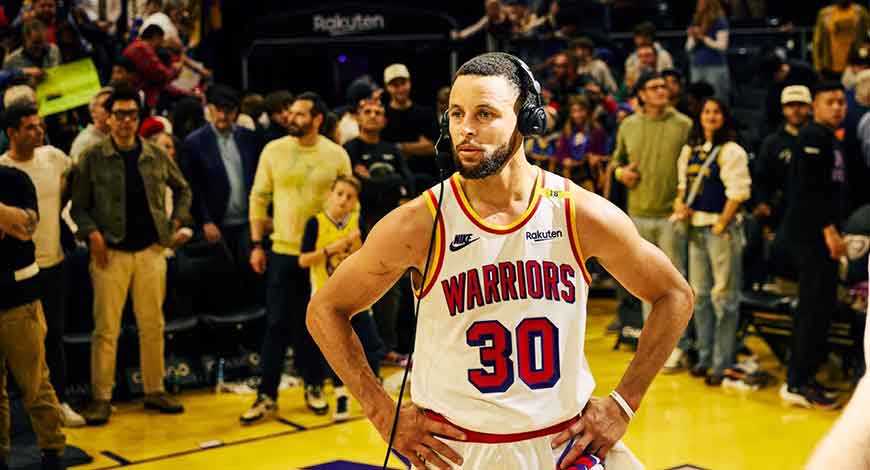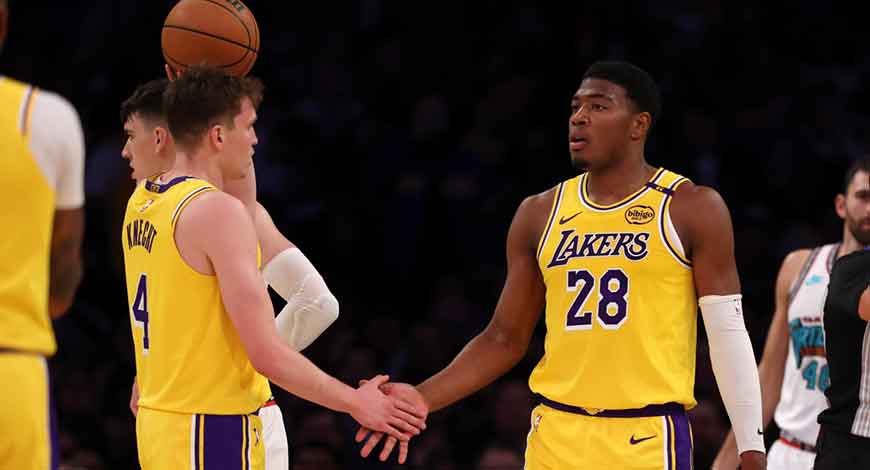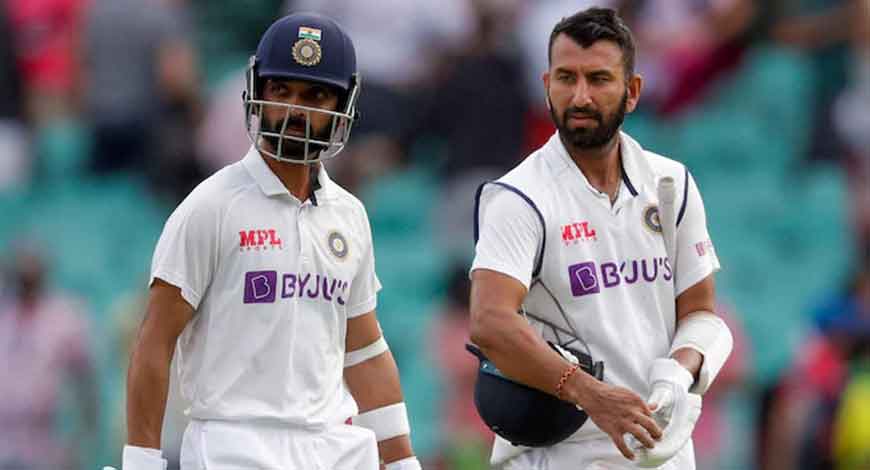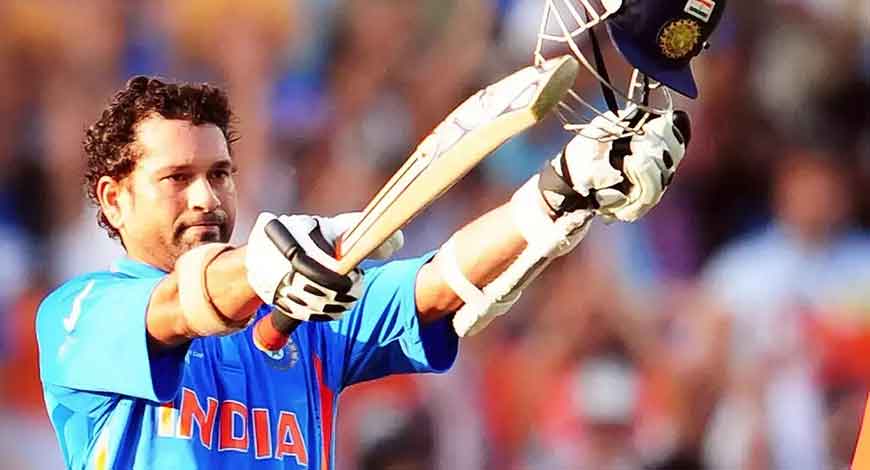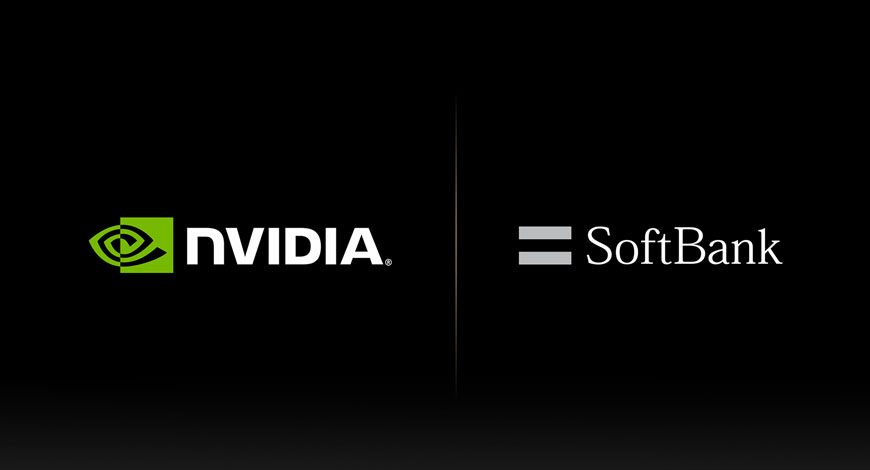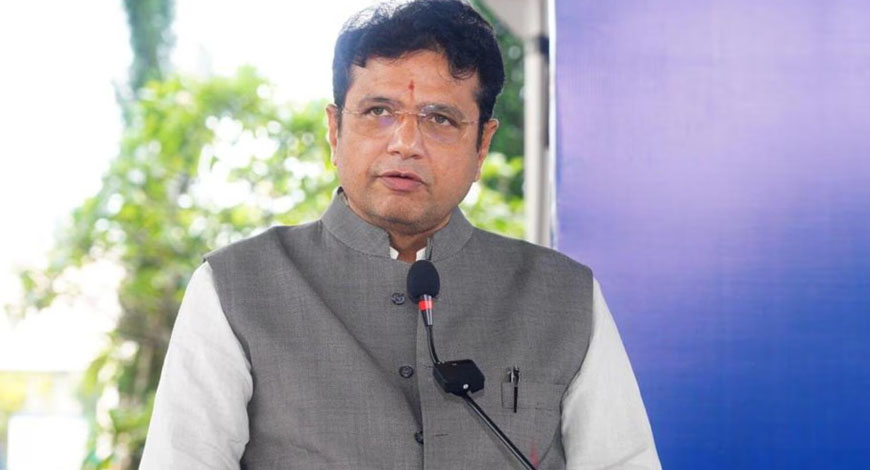This is some wild action happening between the circles. Minnesota’s Jaden McDaniels is guarding Steph Curry nose-to-nose more than 40 feet from the basket, no space between them, two guys sharing a shirt. The other eight players on the court might as well be in another galaxy; this dance in the exurbs is its own game. The player who has the ball is somewhere behind McDaniels, far outside his sphere of interest. His mandate appears settled: He will go where Curry goes, and he will turn his attention to the ball if, and only if, he sees it in Curry’s hands.
Curry is doing what he does when this happens. He’s chopping his steps and raising his arms as if he’s fighting through rough surf, trying to pry himself free. He swims his left arm, the one closest to McDaniels, and runs him into a Draymond Green screen. And there it is: a free patch of hardwood, a moment’s peace, a place of his own. He takes a pass and sends it toward the basket, not so much a shot as a redirection, and tosses it in from about 28 feet, the ball settling in the net as if squeezed from a dropper.
This season, it feels as if each Curry basket is a victory over nature. He has always been the focus of everything around him, but never before as he is now, on a flawed Warriors team that is contending with a paradox: determined to use him less than ever at a time when it needs him the most.
“I want to do this for as long as I can,” Curry says. “But the clock’s ticking. We all know that.”
One after another they come at him: McDaniels, Dillon Brooks in Houston, and a young guy in Memphis named Jaylen Wells, who crouched next to Curry before the opening tip six days before Christmas, the top of his head even with Curry’s armpits, and followed him around just like that for the rest of the game. Curry has seen just about everything, but the look on his face indicated this Wells kid — 6 inches taller, 21 pounds heavier and 15 years younger — might have stumbled onto something new. No defender, judging by Curry’s expression, had looked at him as if he were food.
Curry is 16 seasons into this and 36 years on Earth, and they’re still there, one generation seeping into the next, making him fight for every inch. Nobody else, not Luka or Kyrie or Tatum or LeBron, puts up with this much aggravation. There’s pressure from baseline to baseline, that’s a given, with double-teams routinely starting at half court, from a bunch of guys either trying to make their name or keep it. “It’s fatiguing, but I love it,” Curry says. “It’s the game within the game, and you have to find some lightheartedness in it to deal with the pressure.” There are times when he’ll see the second half of that double-team — always taller, always heavier, always younger — storming toward him at half court and laugh to himself. Are we really doing this tonight?
His movement is constant, and they track every twitch and quiver, knowing the dangers of hesitation and indecision. Lose sight of him for a second and risk humiliation. He might start one way and suddenly head the other, his body foreshadowing nothing, his dribbling quick and effortless enough to make the ball an afterthought. Or he might stand just past the three-point line with the ball and pump-fake — the most infinitesimal movement, the effort involved in its execution masking the effort involved to create it — at precisely the moment you jump forward, convinced this is the one time he will not pump-fake but will instead shoot the ball directly into your outstretched hand. Or he’s going to stand in that same spot while you hold your ground, determined not to fall for it again, only to watch him forgo the pump-fake and flick the ball into the air and through the faraway hoop as if he can read your mind.
“He doesn’t need much space,” Warriors guard Gary Payton II says. “All he needs is a fingernail.”
The theme of the Warriors’ season is the team doing whatever it can to maximize whatever Wardell Stephen Curry II has left. But what’s left of Curry is often obscured by what is left around him. There is no other scorer to fear, no Klay Thompson or Kevin Durant or even the Jordan Poole of the 2022 championship run. He is, in the view of the rest of the NBA, alone. A solo act. Curry does it, or it doesn’t get done.
And when the soloist has a bad night, the show can’t be saved.
Curry is sitting in a folding metal chair outside the Warriors’ locker room at Chase Center during a practice day about a week before Christmas. He has just finished a marathon body-work session he calls “the full car wash.” It is a concession to age and an effort to forestall it: weight work, court work, soft-tissue massage, cold bath, hot bath, more than three hours in all. He runs off the list with a slight hint of embarrassment, as if this level of pampering is someone else’s idea. He doesn’t get these days as often as he’d like, but he says, “At this point, you need one of these days every once in a while.”
It’s another dot on the evolutionary timeline. After he felt like he got thrown around in the 2016 Finals against the Cavaliers, he dedicated himself to the weight room, transforming himself from a young player who couldn’t fill a tank top to a veteran who could moonlight as a bouncer. Now, he’s looking ahead for a few down days on the schedule so he can have what might be described as an active spa day.
This is Curry’s new phase. When I ask if the season is 82 one-act plays or one long novel consisting of 82 chapters, he says, “Oh, man — I love that. I feel like now it’s 82 one-act plays where it used to be the other. You have to give so much attention to preparing yourself for every individual game.” Each game forges its own identity; no longer does one bleed into the next.
Two days earlier, the Warriors lost to the Mavericks, and two days later, Curry will be held without a field goal — the first time in his career when he plays at least 12 minutes — by the crouching Wells in a blowout loss to Memphis. It’s the middle of a confounding stretch in which the Warriors will lose 14 of 20 games in every conceivable way, vaporizing the optimism generated by a 12-3 start. Their season feels similar to a hangover that hits before the first drink.
Curry sits in the folding chair for close to 45 minutes, barely moving, thoroughly digesting each question before giving a considered answer. The questions he likes the least — pretty much every one that can be perceived as putting him above the team — cause him to scrunch his mouth in a way that causes one of his eyes to nearly close. Eventually, the conversation veers to athletic mortality. He is acutely self-aware, especially for someone of his rank and privilege, and he says, “It’s tough at times. It’s scary at times. I know there are a lot less days ahead than there were before.”
All those long postseason runs, the four NBA titles and six conference championships, the constant battles with the younger, taller, heavier defenders, he admits it has extracted a toll. “The scales have tipped, for sure,” he says. “It’s more of a measured approach now. I feel like I can still get to the same peaks, but is that an every-single-night-type thing? Maybe not, but it’s picking and choosing your spots and trying to manage an 82-game schedule and hopefully get to a playoff series where you’re fresh.”
It has led to this: The Warriors play games in December and January with an eye on April, May, and June, with coach Steve Kerr adamantly refusing to extend Curry’s minutes to win non-vital games. (If Curry remains at his current pace — 31.1 minutes per game — it will be the least he has played in a full regular season.) It’s a tricky game to play, and not without its dangers: The Western Conference is so tightly packed and evenly matched that a bad week can send a team from the No. 5 seed to out of the playoffs. Four or five fewer minutes each game without Curry can easily be the difference between a playoff spot and a play-in spot, or a play-in spot and no spot at all.
“I’ve been doing this for years,” Kerr says. “I took a lot of heat during the pandemic season because I was sticking to my guns and playing Steph 34 minutes a game, giving him about an eight-minute break in each half. And I used a line that became infamous around here when I said, ‘We’re not chasing wins.’ And people were like, ‘Then what the hell are you doing?’ and the answer was, ‘We’re saving Steph. We’re preserving him for his career.’ I probably


